constituent assembly of india debates (proceedings)- volume vii
constituent assembly of india debates (proceedings)- volume vii
constituent assembly of india debates (proceedings)- volume vii
Create successful ePaper yourself
Turn your PDF publications into a flip-book with our unique Google optimized e-Paper software.
that there is an understandable feeling among the people <strong>of</strong> the States that there should be a federation<br />
between the States and the British portions so that all the Khasi people are brought under a common<br />
administration. The position is that in the British areas, though there is now the franchise and a member<br />
is sent to the provincial legislature, there is no statutory local body for local self-government. The States,<br />
on the other hand, enjoy certain rights as stated above, and the problem is to bridge the gap.<br />
The Khasi and Jaintia Hills have the advantage <strong>of</strong> the provincial head quarters Shilling, being situated<br />
among them. Literacy among the Khasi amounts to about 11 per cent with a male literacy <strong>of</strong> 19 per cent.<br />
The district is already enfranchised and the special features which it is desirable to bear in mind is the<br />
matriarchal system prevalent there, the democratic village systems and other special customs and<br />
traditions. Cultivation in the Khasi and Jaintia Hills maybe regarded as comparatively advanced. There is<br />
a good deal <strong>of</strong> wet cultivation and the culture <strong>of</strong> oranges and potatoes is common. The Khasi have also<br />
taken to non-agricultural pr<strong>of</strong>essions much more than other hill people.<br />
8. THE GARO HILLS -<br />
Which is the butt-end <strong>of</strong> the range <strong>of</strong> hills which constitute the water shed for the Brahmaputra and<br />
the Surma Valleys. The Garo who inhabit these hills are people <strong>of</strong> Tibeto-Burman origin and are similar<br />
to the Cachari. The area <strong>of</strong> the district is 3,152 square miles and it is inhabited by a population <strong>of</strong><br />
233,569 <strong>of</strong> which 198,474 or nearly 85 per cent, are tribals, mainly Garo. The Garo inhabit not only the<br />
district which bears their name but there are villages inhabited by them in Kamrup and Goalpara also<br />
and portions <strong>of</strong> the Mymensingh district <strong>of</strong> Bengal joining the Garo Hills is inhabited by thousands <strong>of</strong><br />
Garo.<br />
The Garo are a people with a matriarchal system like the Khasi. The tribal system <strong>of</strong> the Garo is<br />
highly democratic and the whole village with the Nokma as the head or chairman takes part in the<br />
council if any matter is in dispute. The district as a whole is pretty backward with only about five literates<br />
in a hundred and lacking in communications. Christian missions have been active and there has been a<br />
certain amount <strong>of</strong> conversion but on the whole the Garo even while being able to produce a fair number<br />
<strong>of</strong> intelligent and literate people have yet to come up to the degree <strong>of</strong> the Khasi or the Lushai. Franchise<br />
at present is restricted to the Nokma but is unlikely that there will be any great difficulty in working a<br />
franchise system based on adult franchise than in most other areas.<br />
In the Garo Hills also the sole occupation is agriculture and though garden crops are grown round the<br />
huts sometimes, the method is largely that <strong>of</strong> jhuming. The people weave their own clothes but there is<br />
no important cottage industry. The area is however much more in contact with the plains on either side<br />
<strong>of</strong> it than areas like the Lushai Hills or the Naga Hills.<br />
The Garo are keenly desirous <strong>of</strong> uniting all the villages inhabited by Garo whether in the plains <strong>of</strong><br />
Assam or in the Mymensingh district <strong>of</strong> Bengal under a common administration. The Bengal district <strong>of</strong><br />
Mymensingh seems to be the home <strong>of</strong> about 48,000 Garo most <strong>of</strong> whom are on the fringe <strong>of</strong> the Garo<br />
Hills, and the question <strong>of</strong> rectification <strong>of</strong> the boundary to include this area in the Garo Hills district <strong>of</strong><br />
Assam definitely deserves consideration. A similar examination is necessary in respect <strong>of</strong> other Garo<br />
villages in the Kamrup and GoalPara districts <strong>of</strong> Assam.<br />
9. THE MIKIR HILLS -<br />
The partially excluded area <strong>of</strong> the Mikir Hills with an area <strong>of</strong> about 4,400 square miles and a<br />
population <strong>of</strong> about 150,000 persons is split up between two districts namely Nowgong and Sibsagar.<br />
The Mikir Hills form an area rather irregular in shape into which there projects an enclave <strong>of</strong> the Assam<br />
Valley. The western extremity <strong>of</strong> the partially excluded area actually reaches a point in the Khasi Hills<br />
and eastwards, it extends to a point not far from Dimapur while to the north it approaches Golaghat. It is


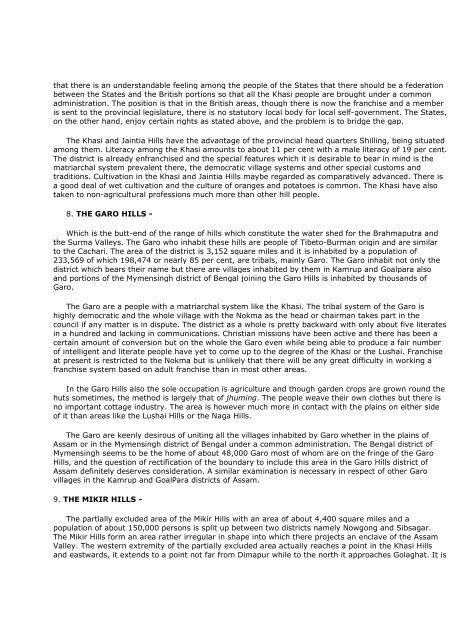
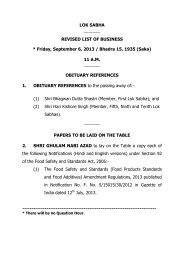
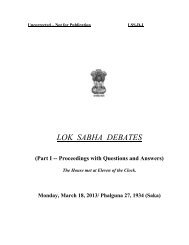

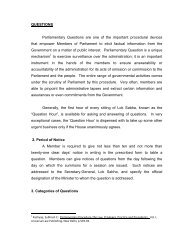
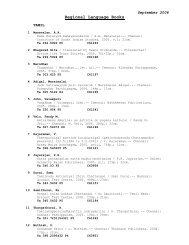

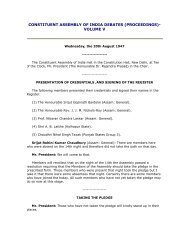
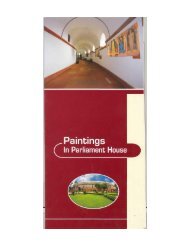
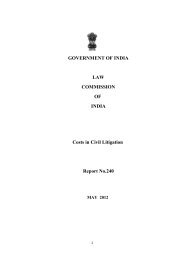
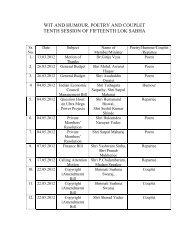
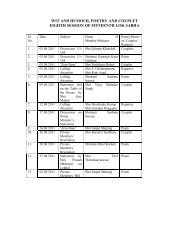

![gÉÉŌ A.]ÉŌ. xÉÉxÉÉ](https://img.yumpu.com/8015720/1/190x245/geeo-aeo-xeexee.jpg?quality=85)
